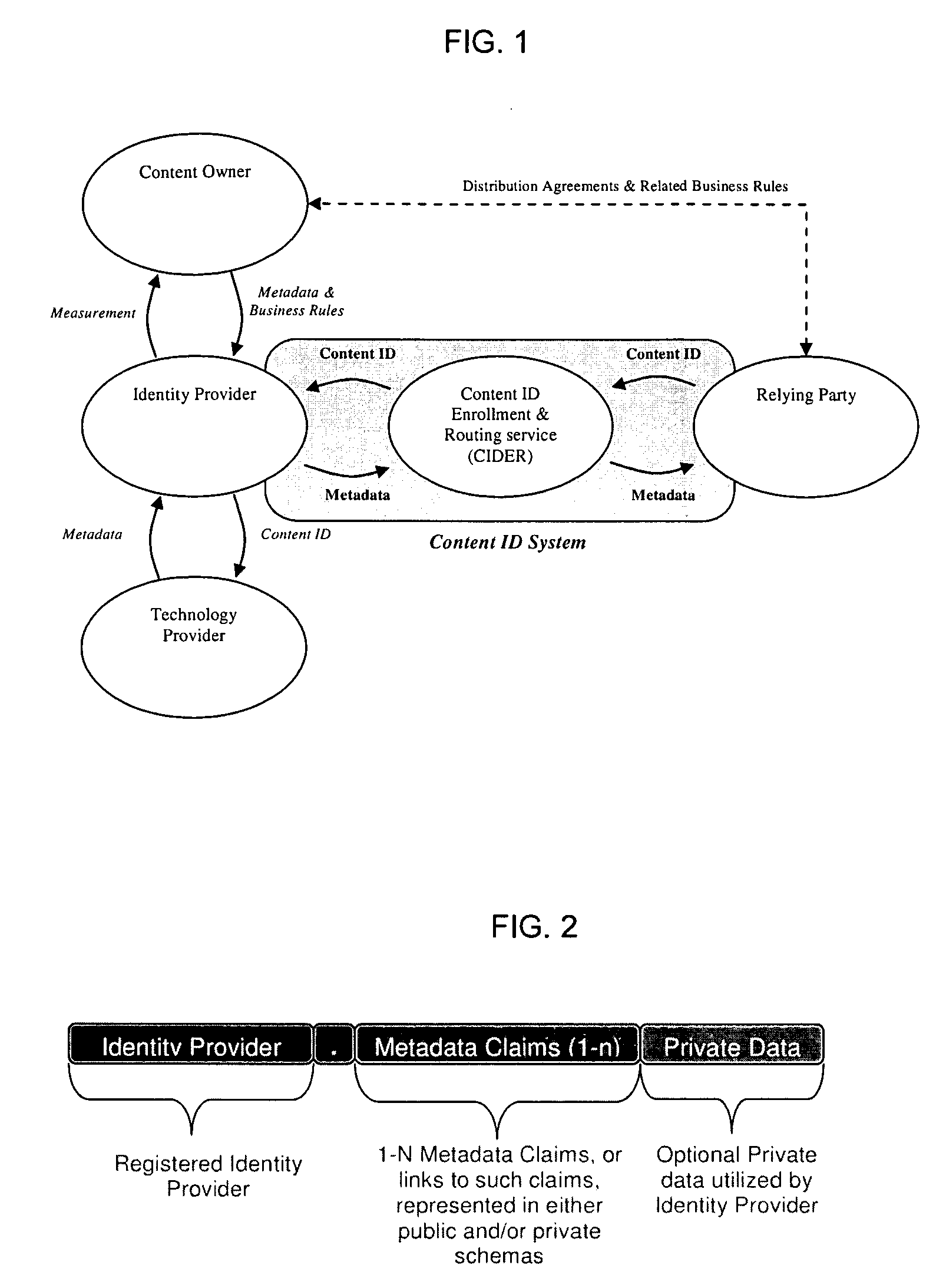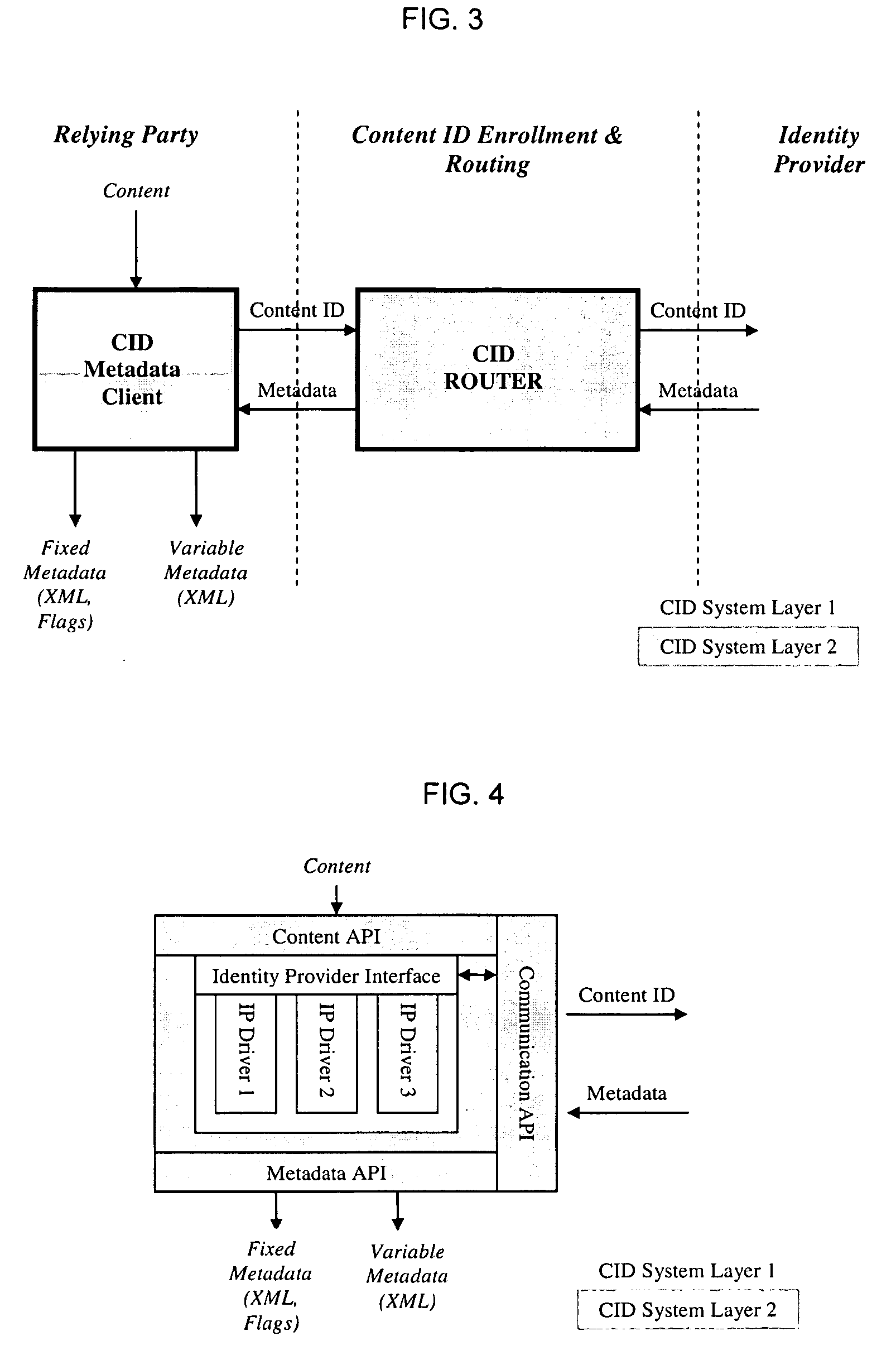Layered Abstraction Systems and Methods for Persistent Content Identity
a content identity and abstraction system technology, applied in the direction of digital transmission, other databases, browsing/visualisation of other databases, etc., can solve the problems of content being re-captured and created in the content may be confused, the content may be re-captured and a new digital instance of content is created, and the threat of content being re-captured and re-created, etc. problems, to achieve the effect of reducing the consumption rate o
- Summary
- Abstract
- Description
- Claims
- Application Information
AI Technical Summary
Benefits of technology
Problems solved by technology
Method used
Image
Examples
Embodiment Construction
Content ID System
[0033]A Content ID System may perform many actions including, e.g.: i) read / form actionable labels (e.g., a Content ID (“CID”)); ii) retrieve / parse metadata based on CIDs; and iii) enable applications. These actions may occur within an ecosystem that balances the needs of primary actors in a distribution channel and in support of, e.g., one or more of the following goals:[0034]Content / Metadata owner management of meta-data.[0035]Minimal disclosure of meta-data for a defined use.[0036]Justifiable parties (security between elements in the ecosystem).[0037]Pluralism of Identity Providers and technologies.[0038]Human integration, incorporating content owners for sensitive applications such as take down notices, warnings, legal actions, etc.[0039]Consistent experience across contexts for end users.[0040]Support for fluid migration from proprietary sources of identity and metadata to fully federated embodiments.
[0041]To achieve one or more of these goals, three func...
PUM
 Login to View More
Login to View More Abstract
Description
Claims
Application Information
 Login to View More
Login to View More - R&D
- Intellectual Property
- Life Sciences
- Materials
- Tech Scout
- Unparalleled Data Quality
- Higher Quality Content
- 60% Fewer Hallucinations
Browse by: Latest US Patents, China's latest patents, Technical Efficacy Thesaurus, Application Domain, Technology Topic, Popular Technical Reports.
© 2025 PatSnap. All rights reserved.Legal|Privacy policy|Modern Slavery Act Transparency Statement|Sitemap|About US| Contact US: help@patsnap.com



